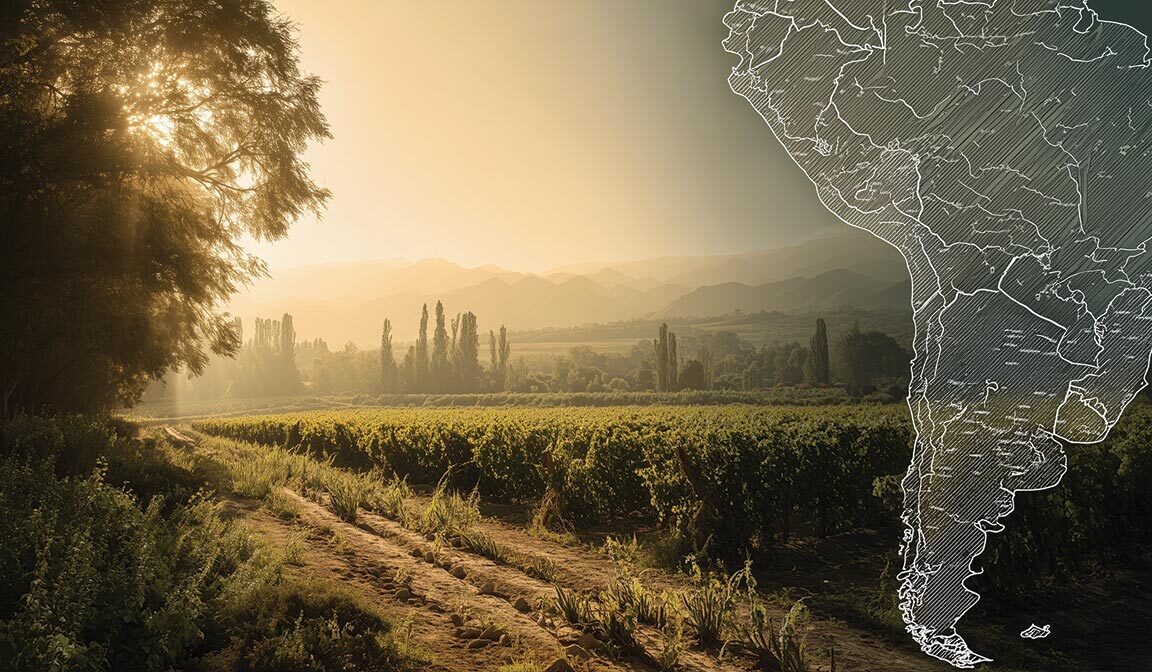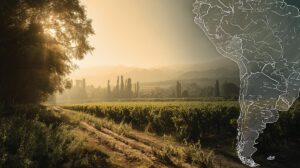

Ryan Robinson, Director of Education, Brescome Barton and Worldwide Wines.
By Ryan Robinson, Advanced Sommelier-CMS, WSET Diploma and WSET Educator
I’m certainly not saying to cancel your Bordeaux subscription or ghost your go-to Sonoma Cab, but maybe … just maybe … it’s time to think about adding a few new friends to your wine fridge, friends from a bit farther south than usual. I’m talking about Uruguay and Brazil. Yes, Brazil. No longer just the home of Carnival, Brazil and its quiet southern neighbor, Uruguay, are making waves in a big way.
In a market flooded with tariffs, logistical headaches and unpredictable supply chains, South America stands out as a refreshingly steady, affordable and, let’s be honest, underappreciated wine supplier. Even better, due to long-standing trade agreements, many South American wines come into the U.S. without the tariffs that often inflate the cost of wines from Europe. That’s a deal your wallet can benefit from.
Let’s start with Uruguay. If Argentina has Malbec and Chile has Carménère, then Uruguay has Tannat. Once a rough and rustic French red, Tannat has found its spiritual home in Uruguay’s rolling, Atlantic-kissed hills. The wines have evolved from their tannic past into more elegant, nuanced expressions; think plum, spice, dark berries and a whisper of smoke.
Producers like Bodega Garzón and Bouza are leading the charge with wines that feel as sophisticated as a Left Bank Bordeaux, but without the Left Bank price tag. And while Tannat is the calling card, don’t sleep on their Albariño either. I just wrote about this gem from Galicia, Spain … and Uruguay is making great examples as well! These whites are zippy, sea-sprayed and perfect with any shellfish you just scorched on the grill.
Uruguay is also refreshingly small in production; this isn’t bulk wine country. That means more hands-on farming, more estate-driven bottlings and more stories behind each bottle. And, yet, because of reliable climate and less congestion at ports, the supply is as steady as they come. That’s just dandy in a post-COVID distribution world where “sold out” might as well be stamped on half your favorite SKUs.
Now, on to Brazil. Yes, it’s true, the country better known for samba, soccer and supermodels is also a rising star in the sparkling wine world. Down in the southernmost reaches of Brazil, in regions like Serra Gaúcha and Vale dos Vinhedos, the altitude climbs and the temperatures cool. It’s here that you find Brazil’s best juice. Brazilian winemakers, many of whom have Italian roots, are using Chardonnay, Pinot Noir and even Moscato to craft méthode traditionnelle bubbles that are as festive as they are well-made.
 The top bottlings? They’re surprisingly refined: fresh-cut pineapple, crisp apple, lime blossom and a finish that lingers just long enough to make you want another sip. Better yet, these wines are often priced under $20. I’ve had Cava that doesn’t touch the balance and charm of some of these Brazilian sparklers. And for those who want to go even more local, many producers are now playing with native Brazilian grapes like Isabella and Bordô to create pink pet-nats and semisweet party wines that are pure fun in a glass. Both Uruguay and Brazil are already showing up on savvy wine lists across the country.
The top bottlings? They’re surprisingly refined: fresh-cut pineapple, crisp apple, lime blossom and a finish that lingers just long enough to make you want another sip. Better yet, these wines are often priced under $20. I’ve had Cava that doesn’t touch the balance and charm of some of these Brazilian sparklers. And for those who want to go even more local, many producers are now playing with native Brazilian grapes like Isabella and Bordô to create pink pet-nats and semisweet party wines that are pure fun in a glass. Both Uruguay and Brazil are already showing up on savvy wine lists across the country.
Sommeliers are looking for quality wines that won’t bankrupt guests, and buyers are desperate for reliable supply chains that won’t leave gaps in their rosé sections come July. Importers are finally catching on, too, with more portfolios featuring Brazilian and Uruguayan producers than ever before. It’s not just a niche anymore; it’s a movement.
There’s also something quietly exciting about discovering regions that aren’t the usual suspects. It reminds us why we fell in love with wine in the first place—not because of points or labels, but because wine is a story in a bottle. And, trust me, these stories from the south are worth hearing.
So, the next time you’re cruising the aisle or filling up a restaurant list, make a little room for South America’s newest stars. Your customers will appreciate the value, your palate will appreciate the novelty and your accountant won’t hate you for it either.
Ryan Robinson is the Director of Education for Brescome Barton and Worldwide Wines in Connecticut. He is also the Wine Director for Cornerstone Restaurant Group in North America and South Korea, and an Adjunct Professor at the University of New Haven. He holds the credentials of Advanced Sommelier-CMS; WSET Diploma and WSET Educator in Wine, Sake and Beer; Rioja Wine Educator; Wine Scholar Guild Educator and Spanish Wine Specialist; and Certified Scotch Whisky Professional from the Council of Whiskey Masters.



